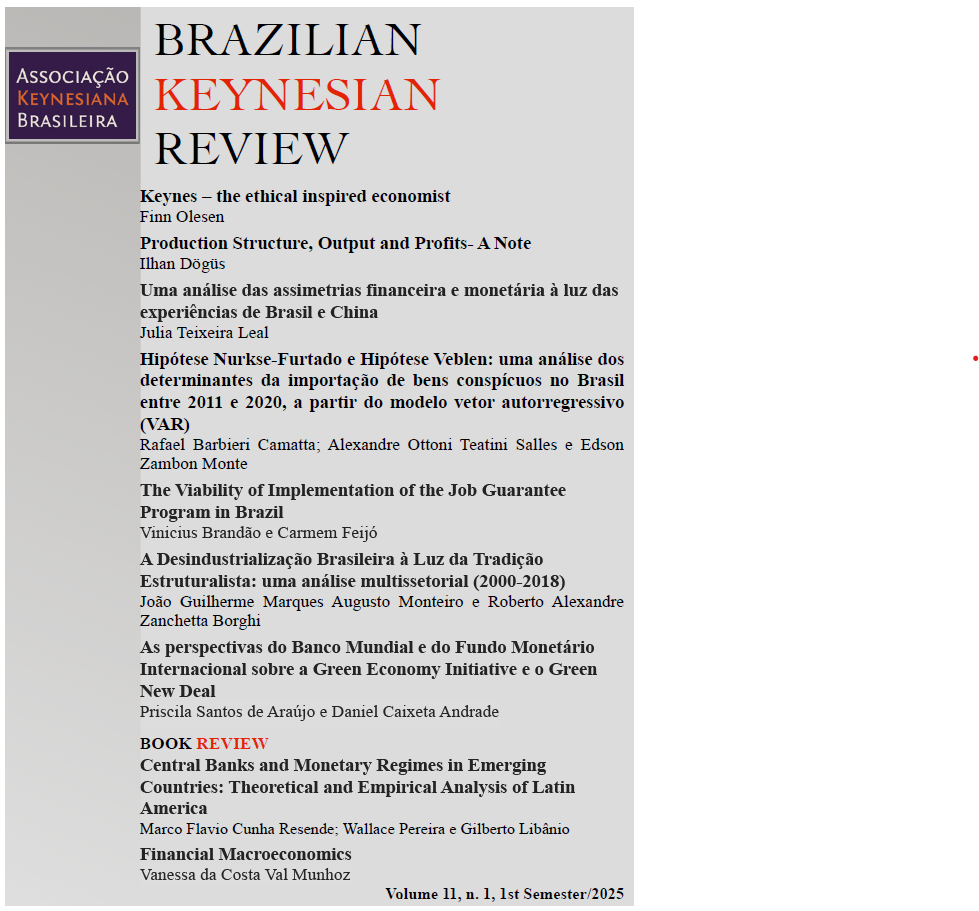Nurkse-Furtado Hypothesis and Veblen Hypothesis: An Analysis of Brazilian’s determinants of conspicuous goods imports from 2011 to 2020, using a Vector Autorregressive Model (VAR)
Abstract
The theoretical literature on conspicuous consumption reveals that this behavior can generate a series of economic and social problems, especially for low-income individuals and underdeveloped countries (Camatta, 2023, Camatta and Salles, 2024). Despite the various theoretical incursions into this subject over the last two and a half centuries, it can be seen that the topic has not been widely addressed quantitatively in economics. This article aims to contribute to this respect by proposing: 1) to construct a time series to measure the variation in conspicuous consumption in Brazil in the period 2011/2020, especially with regard to the import of luxury goods; and 2) to investigate the determinants of this trade. To analyze these determinants, two hypotheses were tested: (i) luxury imports are mainly determined by changes in national income (Nurkse-Furtado hypothesis); and (ii) imports of this category of goods are very inelastic to their average price (Veblen hypothesis). The VAR model used was unable to reject either hypothesis. It was also possible to observe that luxury imports have a high-income elasticity.
Downloads
References
colcoar novas
Copyright (c) 2025 Rafael Barbieri Camatta, Alexandre Ottoni Teatini Salles, Edson Zambon Monte

This work is licensed under a Creative Commons Attribution 4.0 International License.
- Authors keep copyrights and concede to the Journal the right to the first publication, with the paper simultaneously licenced under the Creative Commons Attribution 4.0 International License which allows recognised author and journal work sharing.
- Authors are authorized to assume additional contracts separately, for non-exclusive versions of the paper published in this journal (e.g.: publish in an instituional repository or as a book chapter) with the recogntion of authorship and initial publication in this journal.
- Authors are allowed (and are estimulated) to publish and distribute their work online (e.g.: in institutional repositories or at their personal websites) at any point before or during the editorial process, once this may generate productive alterations on the paper, as well as increse the factor of impact and quotation of the published paper (please, see Free Access Effect)


